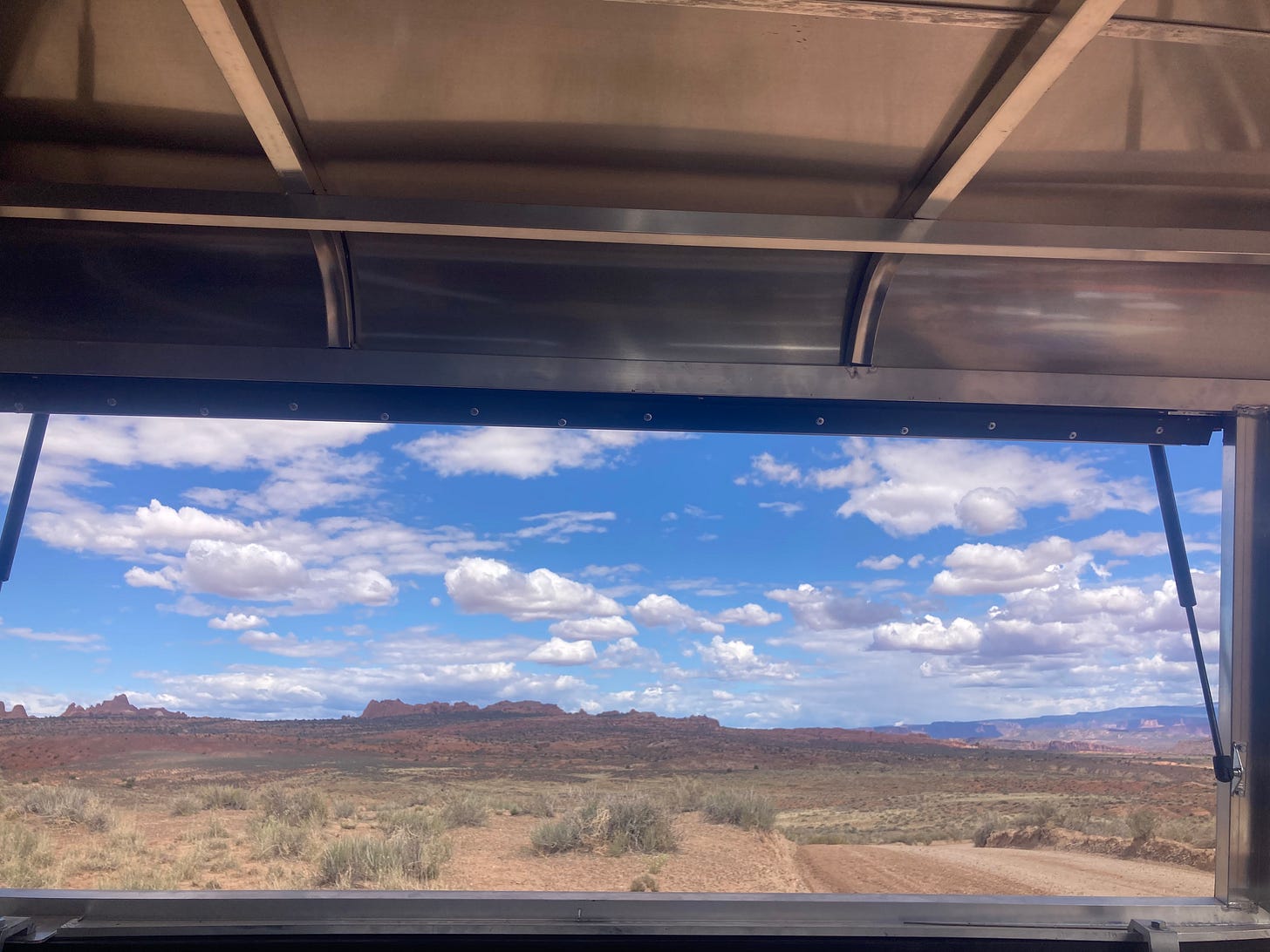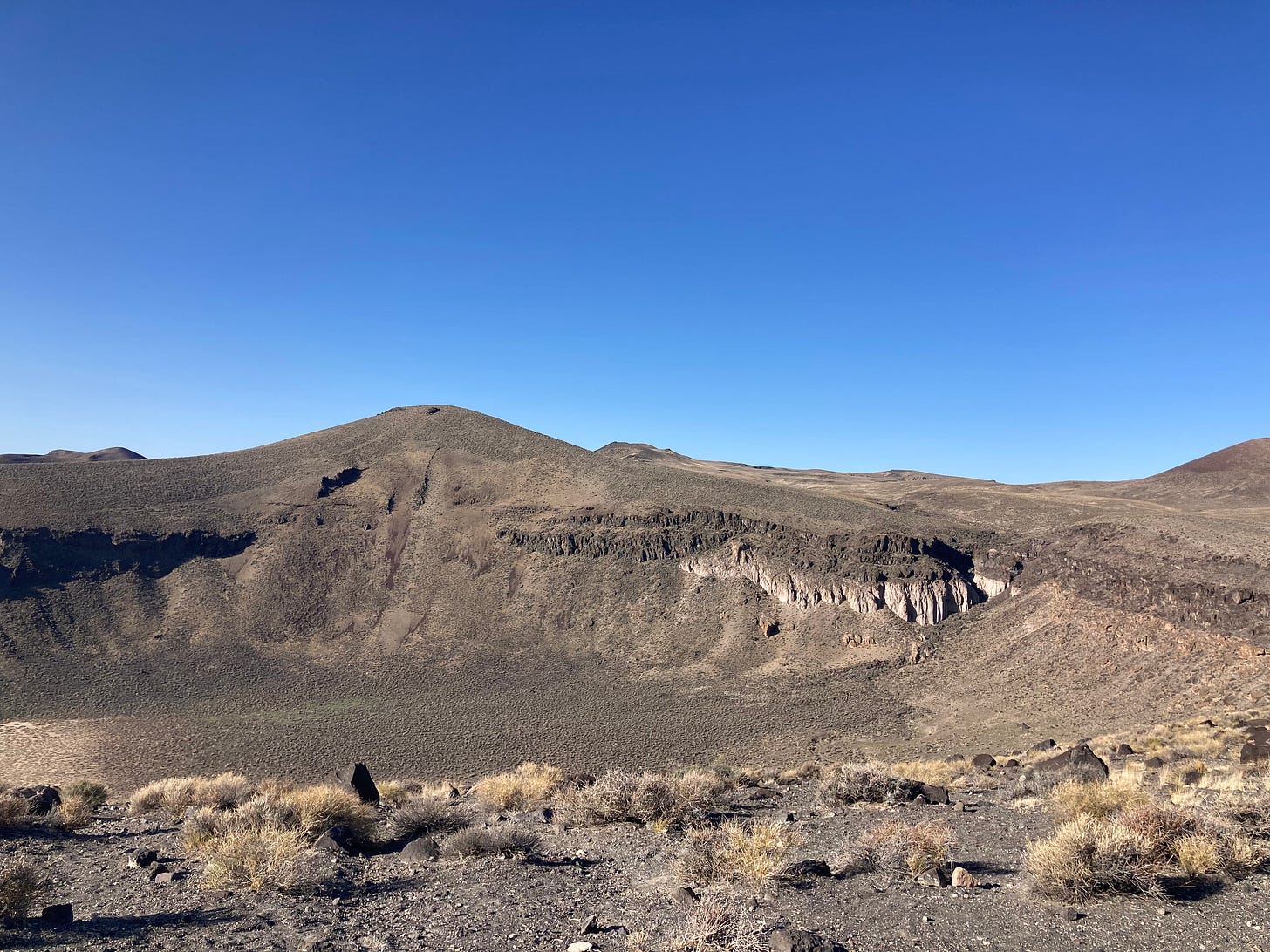Hello friends,
Writing you (July 3) from Vegas, where it’s a balmy 90 degrees with “thunderstorms on the prowl” predicted for later this afternoon (verbiage courtesy of Accuweather). I am back in Vegas for the time being (as in, I signed a lease until April) to work on a book about the wonders and extremities of the world’s deserts. The book sold to Random House in March, and since then, I’ve gone on a few reporting trips around the Southwest. But mostly, I’ve been frantically arranging international travel — to places like Chile and Namibia, and eventually (hopefully!) Mexico, Mongolia, and Australia. I’m so grateful I have the financial support to make the book the best it can be, and it feels good to dig deep into a project I love. Deserts, as you’ve read over the years, have meant so much to me personally. In my life of constant movement, the Mojave and the Great Basin are grounding. These are the deserts I know the best, and still, there’s so much more to see and feel and experience.
(I have a German publisher too! Fischer Verlag. <3)
On the local Vegas mountain, Mount Charleston, I saw a bright red summer tanager for the first time. I don’t know much about birds, but my friend Kristen is an avid birder, and the other week she took me to the mountain for a slow, hours-long amble through pines. We listened hard and looked for snatches of wings through tree branches. The outing taught me a new way of paying attention: to sound and color and movement.
A few weeks ago, on a desert walk after dark (about the only time you can walk in the summer), friends and I saw several kangaroo mice and a small toad along our trail. I’d never seen any of these animals on my walks through Red Rock Canyon, and I realized I’d been missing a whole world that came out only at night.
Last month, I visited the remote Railroad Valley, in central Nevada, for the first time. It’s a fascinating place. NASA calibrates satellites on a vast dry lakebed on the valley floor. Ancient water trickles from below ground to the surface in a series of springs, where miniscule snails and endemic fish live. There is lithium exploration, cattle grazing, and — rare for Nevada — oil drilling. The valley is a great microcosm for much of what I’m exploring in the book. Although culturally, we are often taught to perceive deserts as lifeless and barren, they are full of life. And though we may think of deserts as resilient places — they are, after all, lands of extremes, in terms of dryness and temperature — they can also be exceptionally fragile. The Railroad Valley springs are groundwater dependent ecosystems, and any type of extraction that alters their water flow could be devastating to the plants and animals that live there.
I was in the valley to follow scientists searching for a rare desert orchid. The days were long and warm, and at night, as the sun lowered over our campsite in the Pancake Mountains (a very cute name), clouds rolled in, wind picked up, and dust storms whipped through. I had no service, and couldn’t comfortably be outside, so I just sat in my car and watched the dust. For hours. At certain points in my life, this type of stillness would have been frustrating. I like to walk, to move, to do things at all times. But there’s something wonderful about being at nature’s mercy, beholden to whatever disruption it may bring. I hope my book reporting and writing process unfolds this way. I hope it’s a process of deep attention and slow unfurling. (In spite of my rather quick deadline.)
If you have any grand desert thoughts, please send them my way! I’m writing about the people who live in deserts too, and am hoping to include a diverse range of perspectives on what it’s like to make a home in these places.
In other news, I published a few stories in the spring. First, an essay about the Colorado River Water Users Association conference that happened in Vegas last December. If it sounds dry, it’s not! (ha.) There are some colorful characters at the heart of the fierce and emotional debate over how to manage a river that supplies water to 40 million people. I also wrote about copper mining in Arizona and the fuzzy meaning of “critical” in the term “critical minerals,” for the Baffler, and about a roving mud puddle near the Salton Sea, for Alta. Finally, a story I reported for nearly two years, about the social and psychological ramifications of being diagnosed with breast cancer at a young age, published in the Economist’s 1843 magazine. Hope you give one of these a read.
Friends who’ve written big books, help! How did you do it? How did you live alongside the work? It is challenging balancing logistics, traveling, reporting, writing, reading, and having a life. I love working, and I love to work all the time, but I’m finding that the ‘having a life part’ of the equation is falling by the wayside. Maybe that’s just the way it’ll go for a year. Or maybe not. All sage advice welcome!
thanks for reading. Would love to hear from you! Hope you have a bright weekend that’s not too hot, or hazy from wildfire smoke…
Meg





